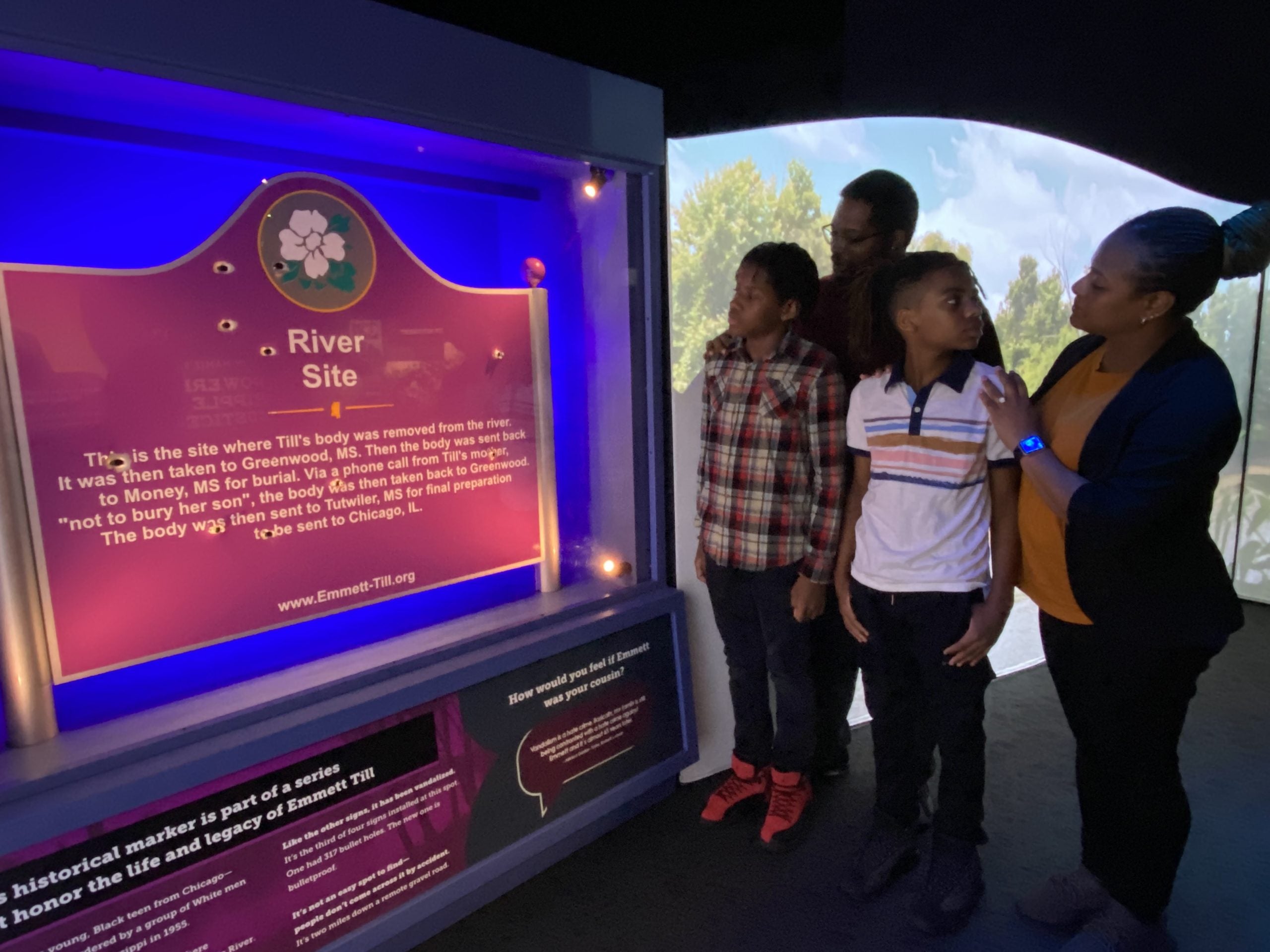
Many people are familiar with the story of Emmett Till, a 14-year-old Black boy who was tortured and killed for his interaction with a white woman during the Jim Crow era.
Our awareness of his story is in large part due to the actions of, and words spoken by, his mother Mamie Till-Mobley. Following his brutal murder, Till-Mobley urged to “let the people see what they did to my boy,” and chose to have an open casket funeral service. This forced America to confront the barbaric inhumanity of racism and became a catalyst for the Civil Rights Movement.
The Atlanta History Center’s “Emmett Till & Mamie Till-Mobley: Let the World See” exhibition is furthering Mamie’s mission to “let the people see what they did,” which is just as important today as it was in 1955.
This exhibition offers a unique and more intimate telling of what occurred — being told through the firsthand account of Emmett Till’s cousin, Reverend Wheeler Parker.
“Reverend Parker actually accompanied Emmett to Mississippi from Chicago. He was there the night Emmett was kidnapped and during all of the horrific events,” said Kristian Weatherspoon, Atlanta History Center Vice President of Digital Storytelling. “It’s really important that people hear this story from his vantage point, as someone who was there. He’s able to give interesting insight into who Emmett was even before he came to Mississippi. He was jovial, happy. I think people forget that. He was a child.”
From August 5 to September 17, the touring exhibition– created in collaboration with the Emmett Till and Mamie-Till Mobley Institute, the Emmett Till Interpretive Center, the Till family, and The Children’s Museum of Indianapolis– will be on display in Atlanta. “With Atlanta being the cradle of the Civil Rights Movement, it made a fitting location for this exhibition,” said Atlanta History Center Vice President of Education, Shatavia Elder.
Weatherspoon went on to explain, “We’ll also have a local component, where we explore how Emmett Till’s murder spurred the civil rights movement, especially considering the civil rights giants who called Atlanta home.”
During a 1963 Mother’s Day sermon at his Atlanta church, Ebenezer Baptist Church, Dr. Martin Luther King, Jr. said, “You’ve seen it,” referring to racial injustice, “in the crying voice of a little Emmett C. Till, screaming from the rushing waters in Mississippi.”
Later that year, on August 28, 1963, King delivered his iconic “I Have A Dream” speech. It was eight years to the day of the August 28, 1955 kidnapping and murder of Till. In an op-ed written by Congressman John Lewis and published in the New York Times on the day of Lewis’s 2020 funeral, the beloved leader wrote, “Emmett Till was my George Floyd.”
There’s power in storytelling. If there weren’t, politicians wouldn’t be working so hard to hide our stories.
Till’s life and legacy is still very much a part of the national conversation on the impact of racism on Black history — American history. In July of this year, the Biden administration announced that it will establish a national monument to honor Till, and in 2022, Congress passed the Emmett Till Antilynching Act. Furthermore, it was just this year when Carolyn Bryant Donham, the white woman whose words led to the killing of Till, died. Donham, who had allegedly admitted to lying under oath about Till, was 88 years old — a stark reminder that, had his life not been cut short, Till could still be living today. We’re not far removed from the atrocities of yesterday. In fact, we’re still living through violent racism today.
Over the last several years, a historical marker in Mississippi commemorating Till had been repeatedly shot at and vandalized before being replaced with a bulletproof marker. “I think right now they’re on the fourth marker,” said Elder. “We have the third marker on display in the exhibition. It has roughly 300 bullets inside of it. It’s a reminder of how this legacy of racism has perpetuated so long and continues to do so.”

The preservation and amplification of Black history has always been important. But these days that feels especially urgent as we witness ongoing attacks on that history — from bans on books and critical race theory, to Florida creating policies that say Black people benefited from slavery. There’s power in storytelling. If there weren’t, politicians wouldn’t be working so hard to hide our stories.







Mamie wanted the world to see what was done to her boy to encourage action and change. “We’re showing folks that we have a joint role in helping to alleviate racism at its root cause, and how we can all be a part of what’s called ‘Mamie’s ripple for influence,’” explained Elder. “We are all in this collective moment to make an impact on society and make it a better place for everyone.”
For those who can’t make it to the in-person exhibition in Atlanta, or during its next stop in Memphis, Tennessee’s National Civil Rights Museum, there’s also a virtual tour that includes resources.





